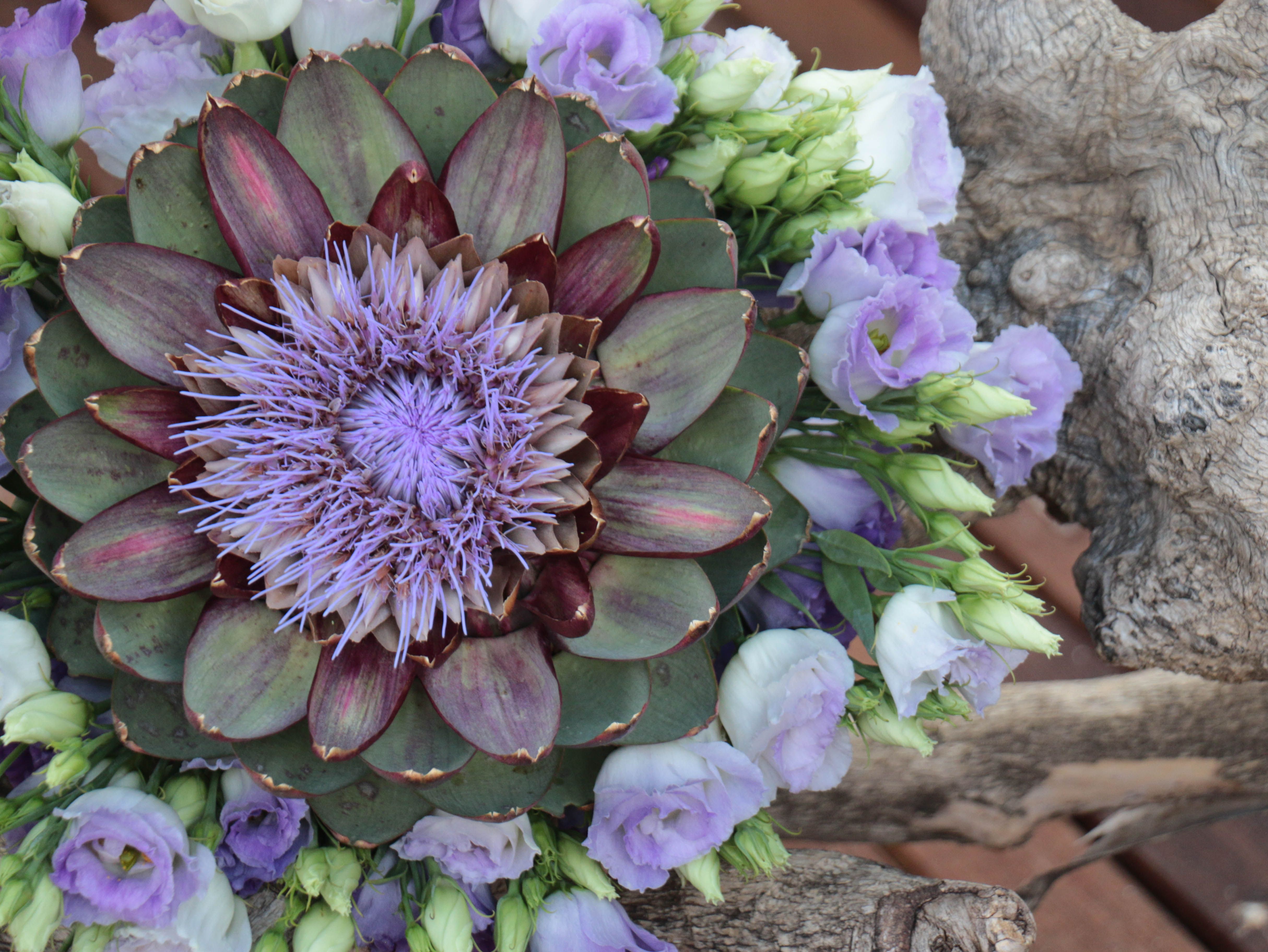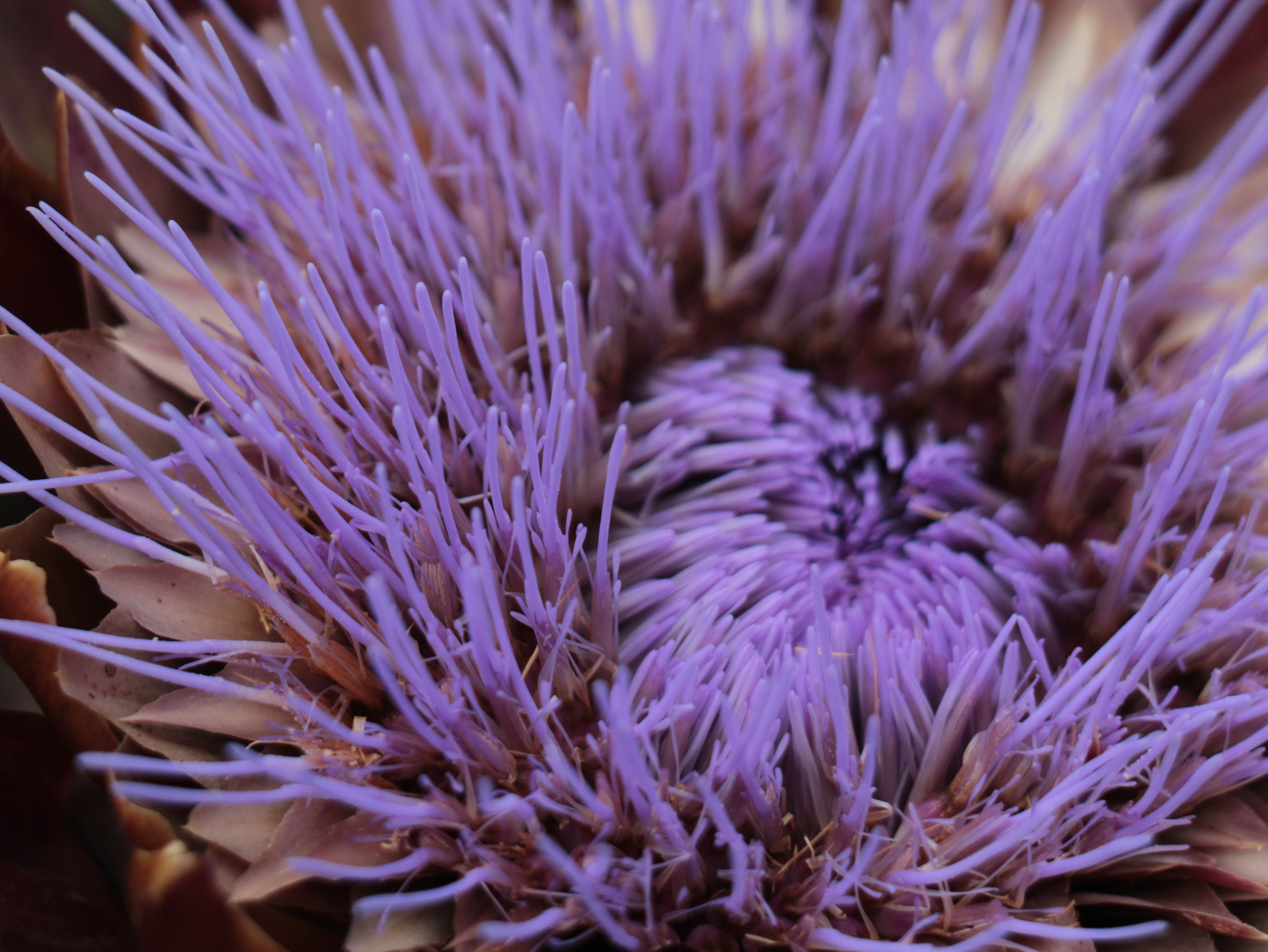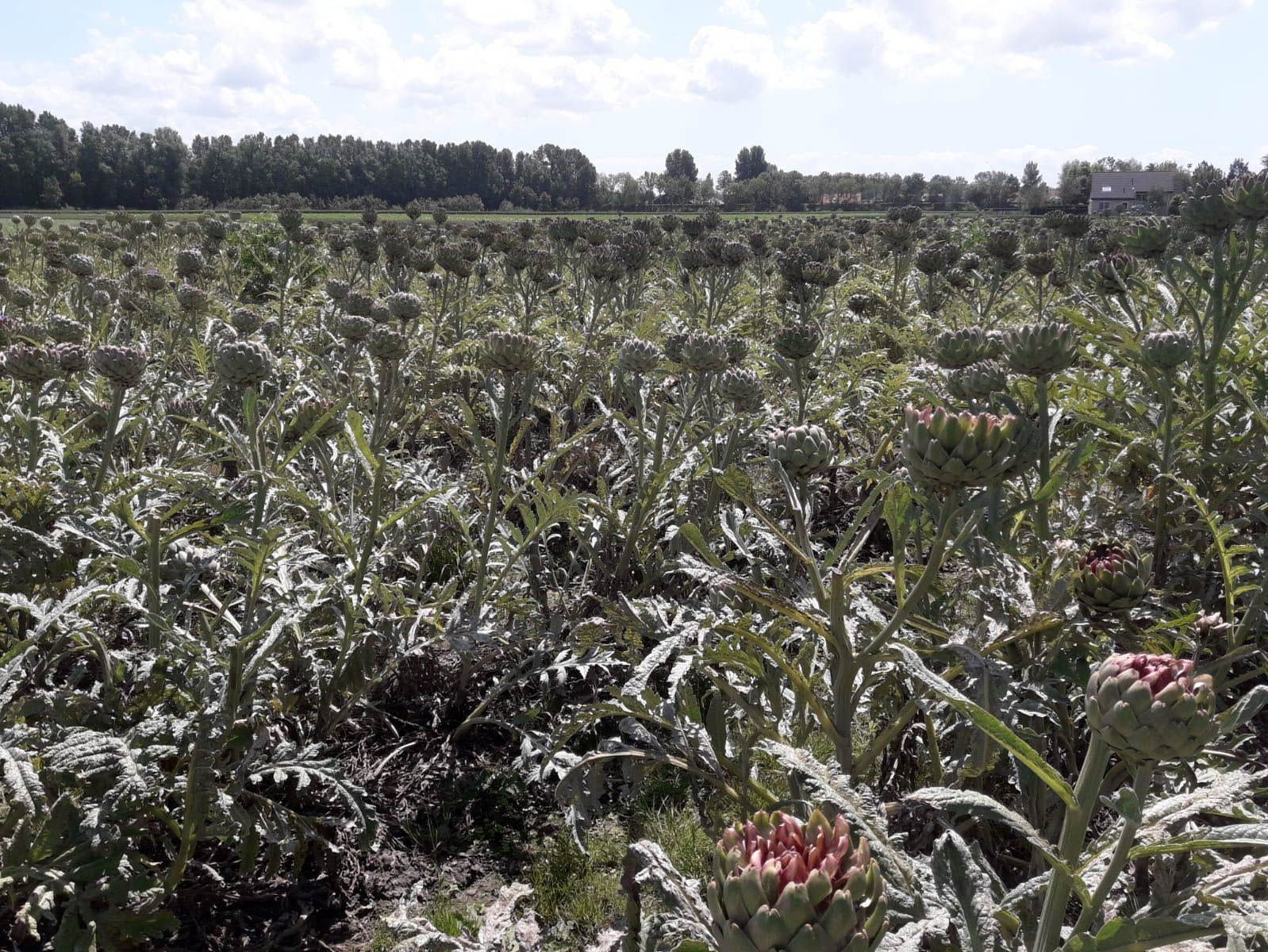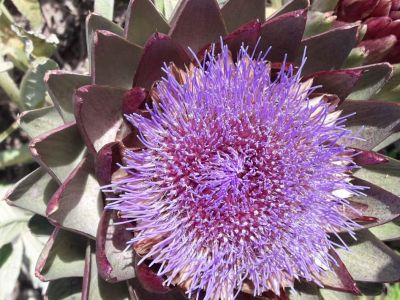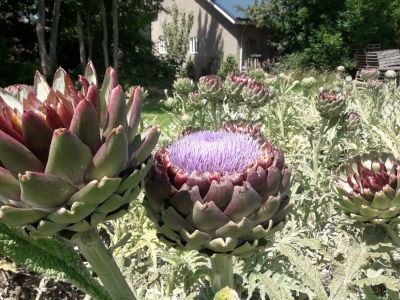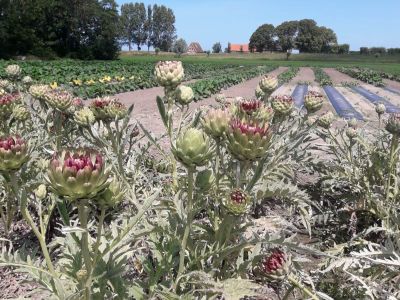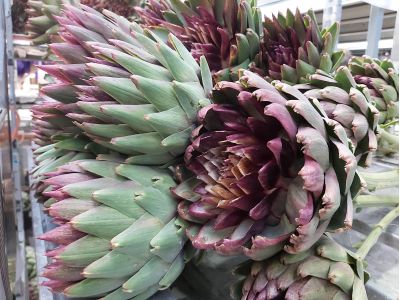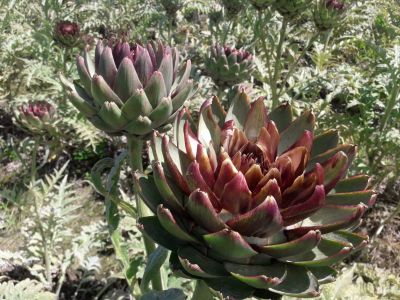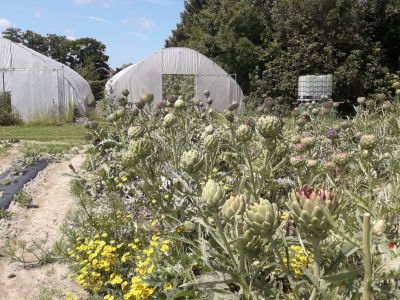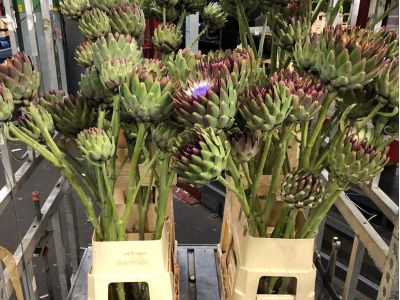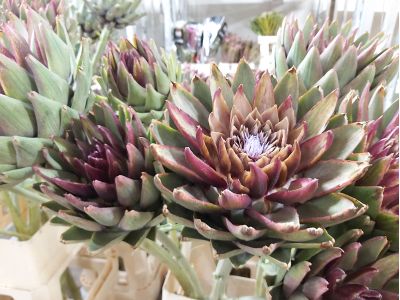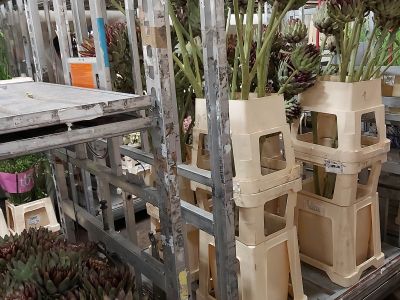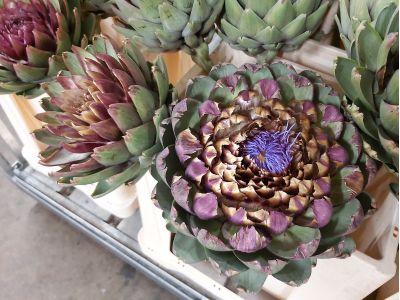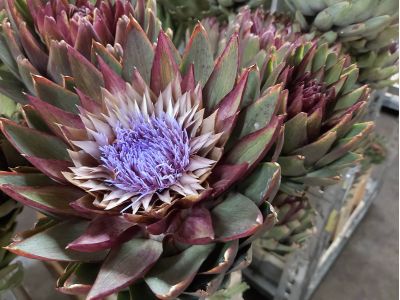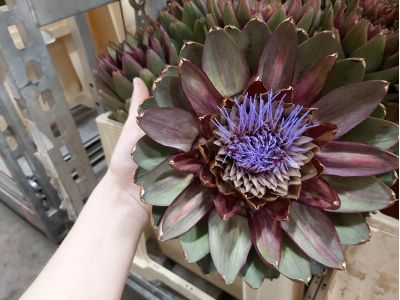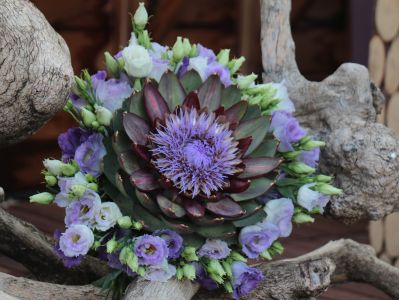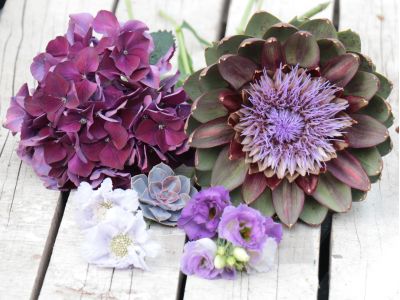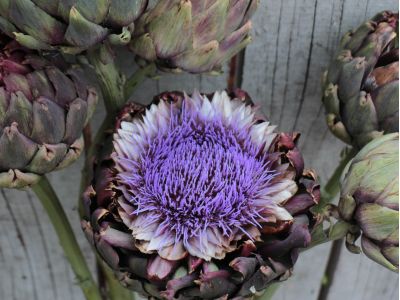Cynara scolymus
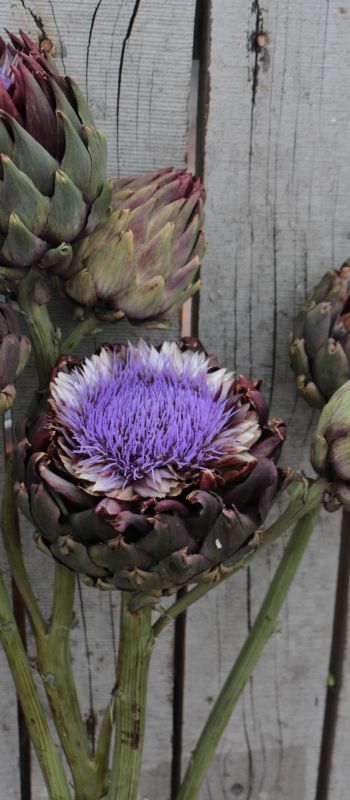
Calendar
The large, long stems are taken from the 2nd and 3rd year plants. These flowers are available from mid-May to late June.
The first year flowers, the somewhat shorter branches, are available in August/September.
In the spotlights
When we mention Cynara, not many people know what we are talking about. Everyone knows the household name. This enchanting beauty is widely used in the kitchen, but it is also a very exclusive product in the floriculture sector. We are of course talking about the artichoke! Paul van der Zweep from De Pompoenwinkel.nl nursery brought us a beautiful batch of artichokes in various lengths and told us more about this crop.
The pumpkinshop.nl
The pumpkin shop.nl is located on Noord-Beveland, one of the “islands” in Zeeland (in the south of the Netherlands). Paul and his wife Annelies mainly grow ornamental and food pumpkins on 3 hectares of land with the artichoke as a supplement. Annelies was born and raised in arable farming. When her father died in 1985 she continued the business with her mother. Since 2015, Paul has also fully participated in the company. Today Paul and Annelies run the nursery together with the help of their sons Menno and Cees-Jan, who regularly help out in their spare time, both holding other jobs.
Vegetable and floriculture sector
A friend of Paul works in flowerbreeding. When he got a request from an American company to test the latest developments in artichokes in Europe, he immediately thought of Paul. After doing lots of tests with the crop, Paul and Annelies just fell in love with it. And as it turned out, the crop also fit very well in addition to the cultivation of pumpkins, which Paul also cultivates for both the vegetable and floriculture sectors.
Paul also thinks this combination is one of the advantages of the product. He therefore supplies the product to both sectors. You can eat the artichoke before it flowers, the flower must still be in the bud. Once you have cooked the artichoke, you can eat the soft part of the leaves. Once all the leaves have been removed, you get to the core, the bottom of the artichoke. Here the so-called hay (the flowers and fluff) must be removed, after which you can eat the marrow.
As the flower matures, the marrow becomes a bit mealy and chewy. At this stage, the artichoke is more suitable for the floriculture sector. The leaves of the flower open more and a beautiful purple flower emerges from the bud.
Enchanting color
Paul describes the color of the artichoke as enchanting. The flower has a beautiful blue / purple color with an almost silver leaf border around it. He says it’s a color that is very difficult for photographers to capture. The magical color keeps changing when you look at it.
The artichokes can best be put on water at the wholesaler or exporter, but once they are no longer needed by the consumer, they can be processed dry without any problems. This is a good thing actually; the flowers are so heavy that it’s better to use them laying down instead of putting them in a vase. The stem and soil have so much water in them that the flower opens completely even without adding extra water. Eventually the flower dries and you can enjoy it for years.
Naturally, the flower can also be used in a bouquet and put on water. Only down side to that is that the flower then absorbs so much water that it cannot be dried. The attachment to the stem is the most vulnerable spot of the flower. If the flower is put in water, mold often develops there over time, making it impossible for the flower to be dried.

Cultivation
The artichoke or Cynara scolymus is related to the thistle. Cardoon (Cynara cardunculus) is the closest relative of the artichoke. Both cardoons and artichokes are originally from the Mediterranean region and can both be eaten. Cardoon was a popular vegetable, especially in the time of the Romans and the Greeks.
Crop
Artichoke is a perennial crop. In February, the artichoke is sown in warm conditions; when the plants have formed a few leaves, they enter the unheated, frost-free greenhouse. The first flowers can then be harvested in August/September. These are mainly the somewhat shorter branches. The large, long stems are taken from the 2nd and 3rd year plants. These flowers are available in the floriculture sector from mid-May to late June. Any earlier they can be found in the vegetable department.
If the plant is large enough, it will be planted outdoors in biodegradable foil as soon as the Ice Saints have passed. The soil temperature rises quickly due to the black foil. Still, it remains a crop with some challenge. Artichoke is very susceptible to severe frost. Paul and Annelies have already once lost the entire crop (2nd, 3rd and 4th year plants) to a considerable frost week after a sunny spring run-up.
In terms of maintenance, the crop is not very demanding. In the beginning, the foil stops most weeds and Paul no longer needs to water them after planting. And that's a good thing, because most groundwater on this island is brackish with a layer of freshwater above it that needs to be replenished by rainwater. The deep roots of the artichoke know how to find this. Even during really dry periods, the artichoke will survive without water.
FloraPodium, 2 July 2020
Recipe
DELICIOUS ARTICHOKES FROM NORTH-BEVELAND
Artichoke sauce
Ingredients for 4 people
6-8 stemless baby artichokes
1 large onion
4 tbsp olive oil
300 ml of vegetable or chicken stock
½ or 1 level tablespoon of flour
Preparation method
30 minutes total time
Finely chop the onion, heat the olive oil in a pan and put the onion chips in it. Prepare the artichokes at the same time. Cut the head off the stem. Halve the head and peel off the stiff leaves (don't be too economical, tough leaves could ruin the sauce). Cut the rest into pieces and throw them in the pan immediately after cutting, otherwise they will turn black too quickly. Process the artichokes piece by piece. Fry it briefly on high heat and then add the 300 ml hot vegetable or chicken stock of your choice. Put the flour and some water in a sealable cup, shake well to get rid of the lumps and pour into the artichokes.
Now let it simmer on low heat and evaporate to the right thickness.
Recipe from: De Pompoenwinkel
Artichoke: De Pompoenwinkel.nl Geersdijk






